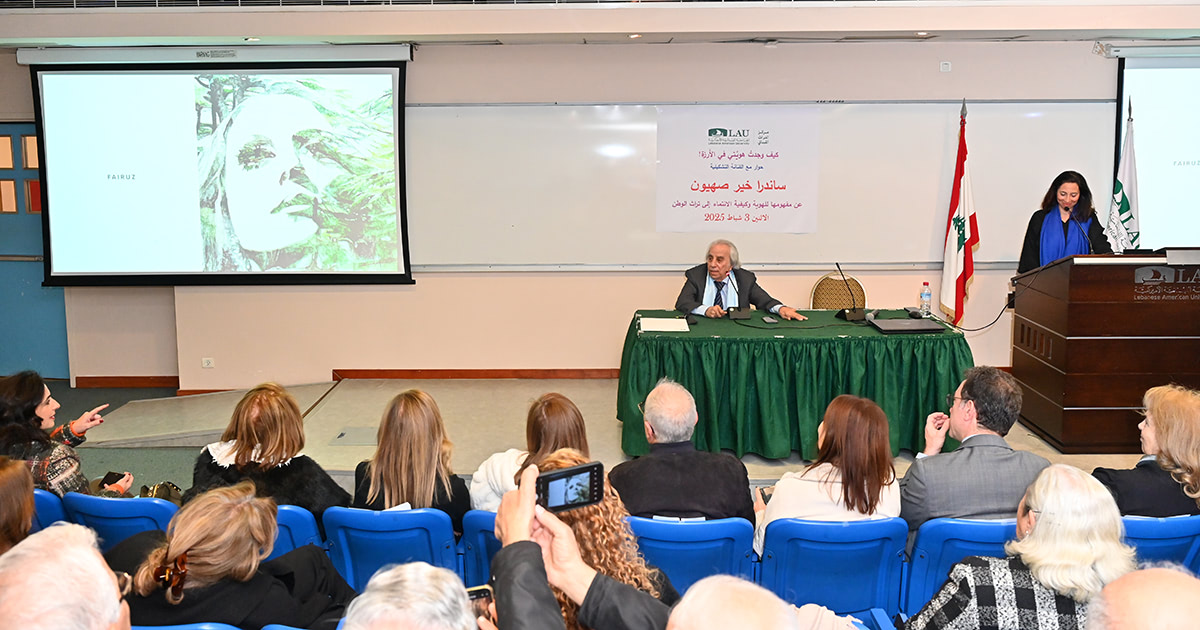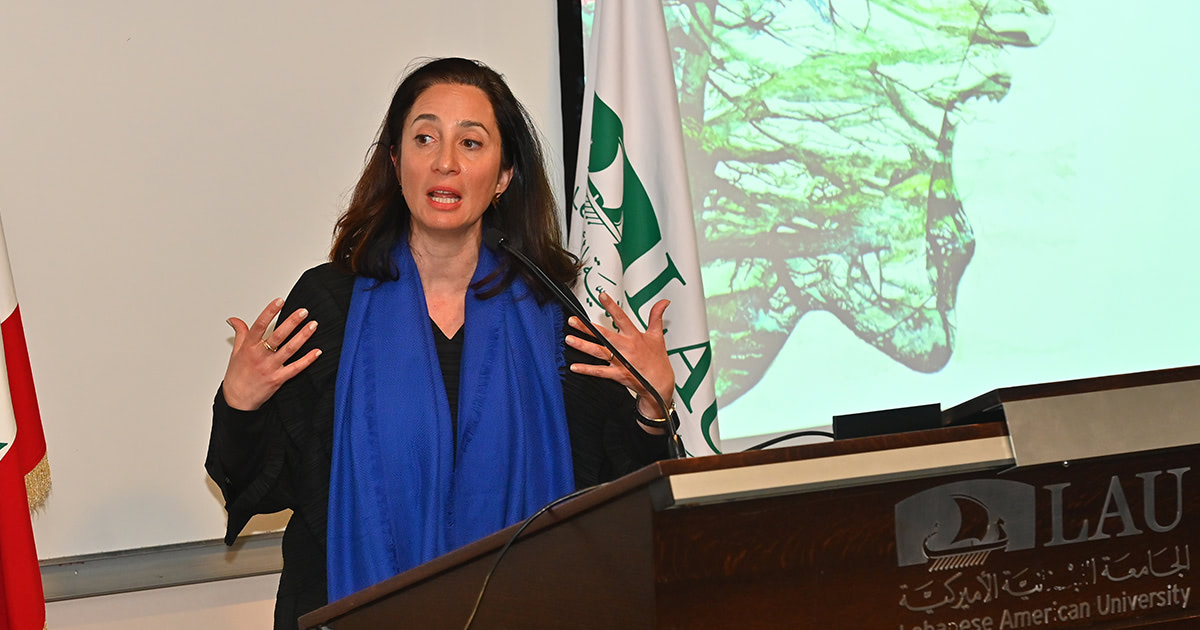Finding Roots: The Story Behind Sandra Kheir Sahyoun’s Artwork
The LAU Center for Lebanese Heritage hosts the visual artist in a conversation about her art as an expression of her national identity and sense of belonging.
As part of its monthly events, the LAU Center for Lebanese Heritage (CLH) showcased the work of Lebanese visual artist Sandra Kheir Sahyoun in an evening that featured expressive paintings and metal sculptures on February 3, 2025, on the Beirut campus.
At the event, titled I Found My Identity in the Cedar, hosted by the CLH Director Henri Zoghaib, Kheir recounted her quest for her national identity, which culminated in a revelation amid the majestic Forest of the Cedars of God (Horsh Arz el Rab), a UNESCO World Heritage Site and emblem of Lebanon’s cultural heritage.
“My journey began as I was relentlessly trying to figure out my identity as a Lebanese woman and citizen,” said Kheir. “I needed to understand my roots and reconnect with the essence of a nation whose identity has been shattered by war and conflict.”
She explained how a mere coincidence led her to the cedar forest, where she found herself transfixed by one in particular—the grand Lamartine cedar.
“I stood as a silent witness to centuries of civilization, embodying the resilience and strength of the Lebanese people; I was overwhelmed by the energy it sparked in me, leading to a deep-seated realization of who I am and where I belong,” she said.
What she understood just then was that “the cedar is not just a symbol on our passports; it is the symbol of steadfastness and a metaphor for our national identity, a reminder of the cultural legacy of the Phoenician civilization from which we descend,” she explained.
Inspired by the experience, Kheir emerged from the forest determined to convey this revelation through her art. She channeled the pride she held in her culture, her newly found Lebanese identity and heritage into paintings and metal sculptures reflecting the beauty of the cedar and Lebanese individuals who encapsulate the country’s soul and essence, such as Fairouz, Gibran Khalil Gibran and Saint Charbel. Through her art, she sought to illustrate their legendary legacy while fostering a sense of pride and connection among her fellow Lebanese.
In addition to celebrating historical and spiritual figures, Kheir’s artwork bravely confronted momentous social and political challenges, portraying the dreams, frustration and burdens of women, youth and children, particularly in the wake of the October 17 revolution and the Beirut blast of August 4, 2020.
“I was stunned by how fast my paintings went viral over social media, particularly the painting of the blindfolded screaming woman. This painting became a medium for expressing the collective grief and hopes of a generation yearning for change, stability, and justice,” said Kheir.
After the event featuring short films of her artwork, Kheir, Zoghaib, and the audience discussed the significant role of art in narrating the struggles and resilience of the Lebanese people, emphasizing how it elicits empathy among viewers, inspires perseverance, and unites people from diverse backgrounds in a shared understanding of their Lebanese identity and heritage.
These were the main reasons behind inviting Kheir to speak at LAU, said Zoghaib.
“Standing before the vivid colors of the Lebanese flag of Sandra’s painting at my friend’s house with the cedar tree inspiring resilience and beauty, I realized that this enriching experience must be shared with the public through CLH, which celebrates our country’s heritage and culture,” he said.

